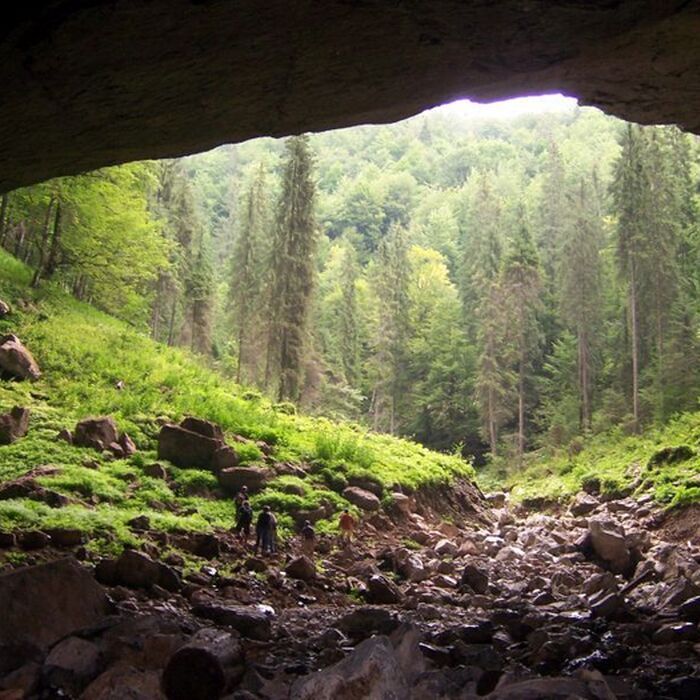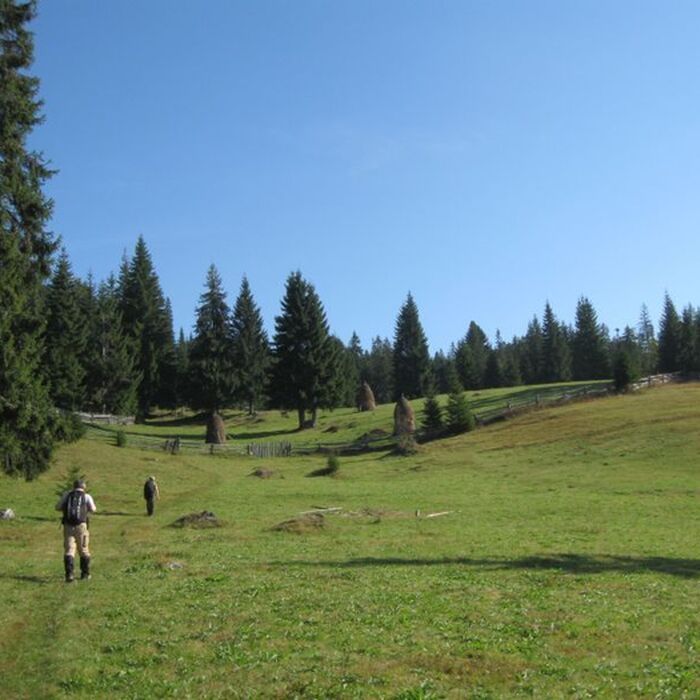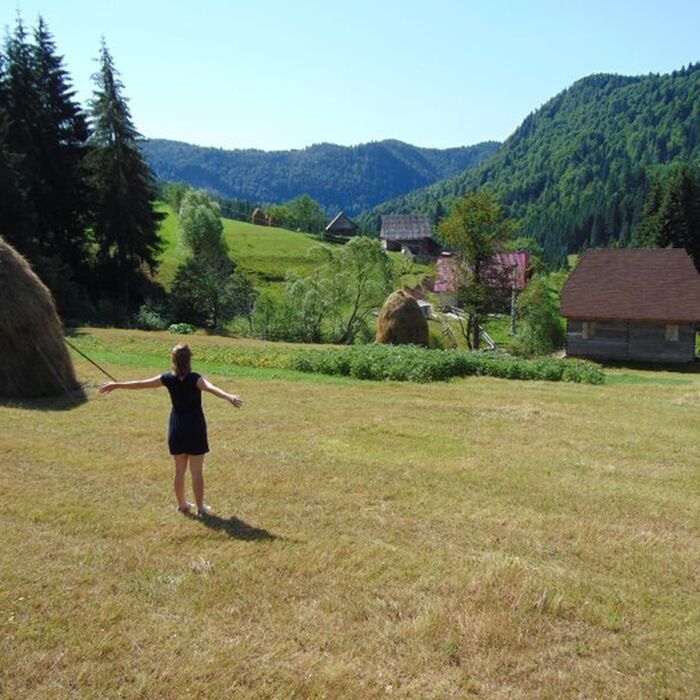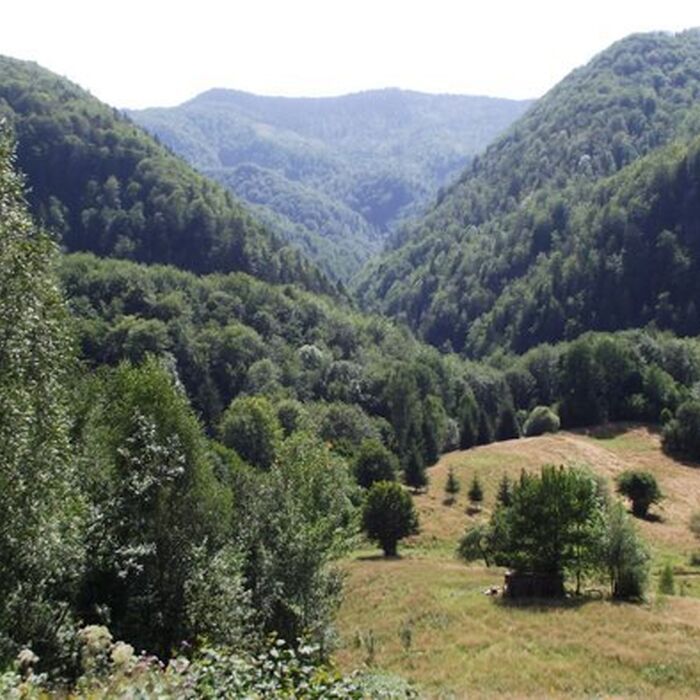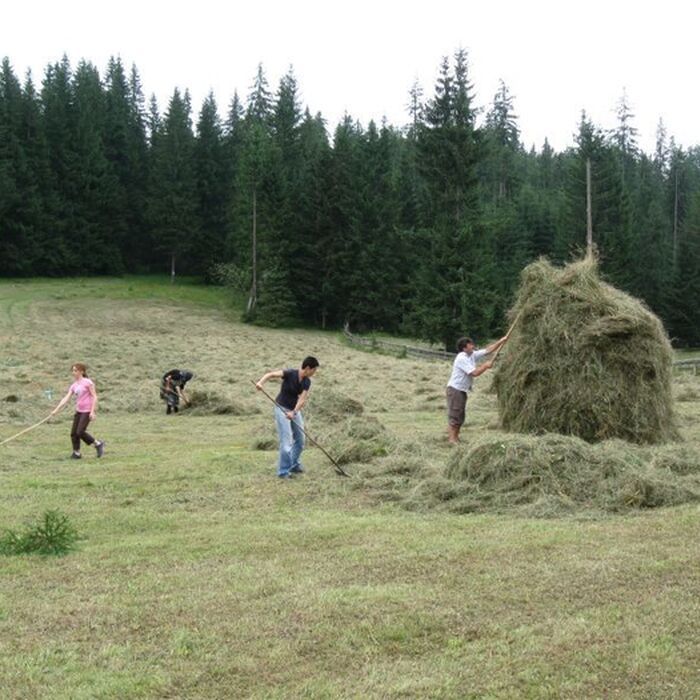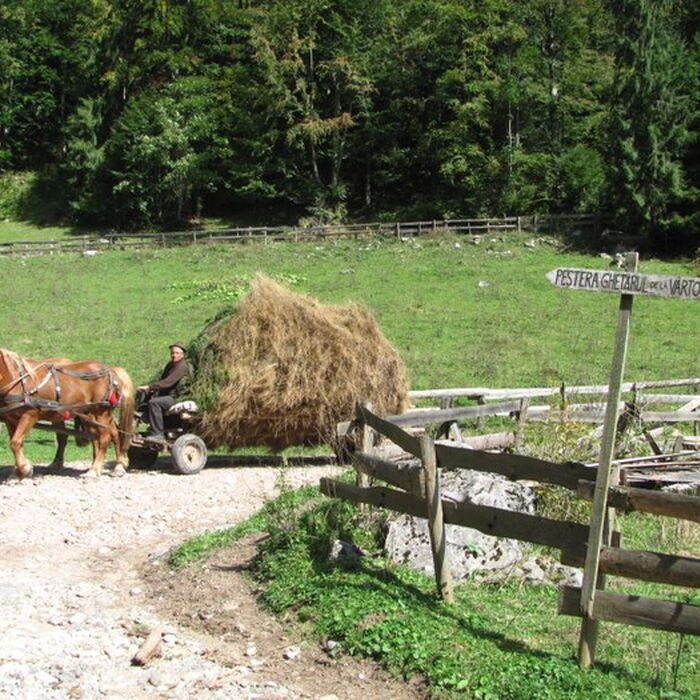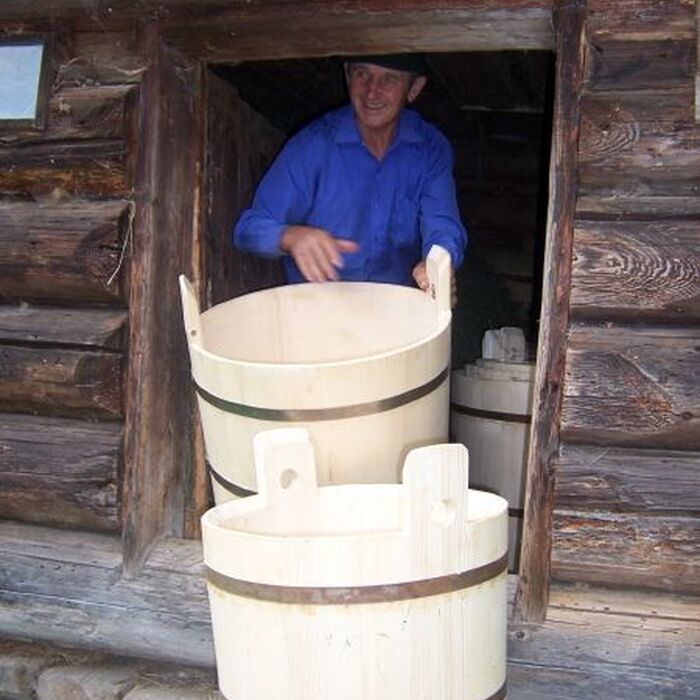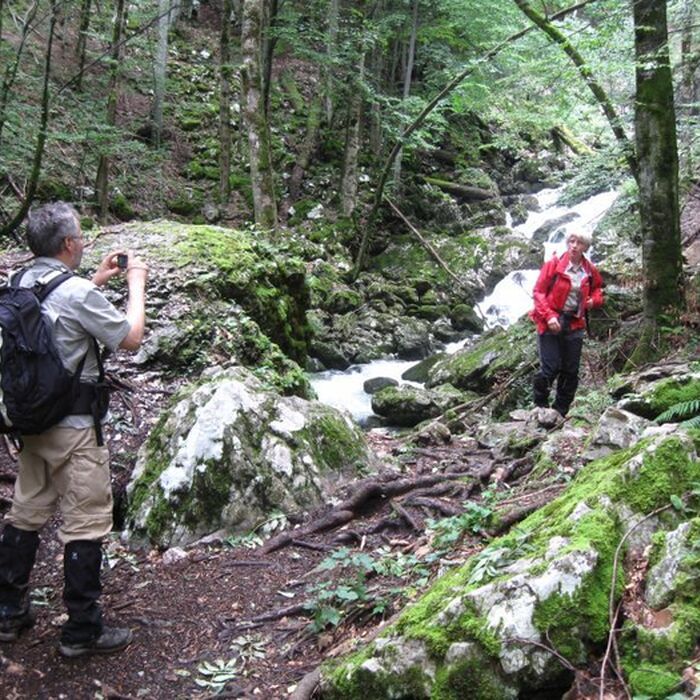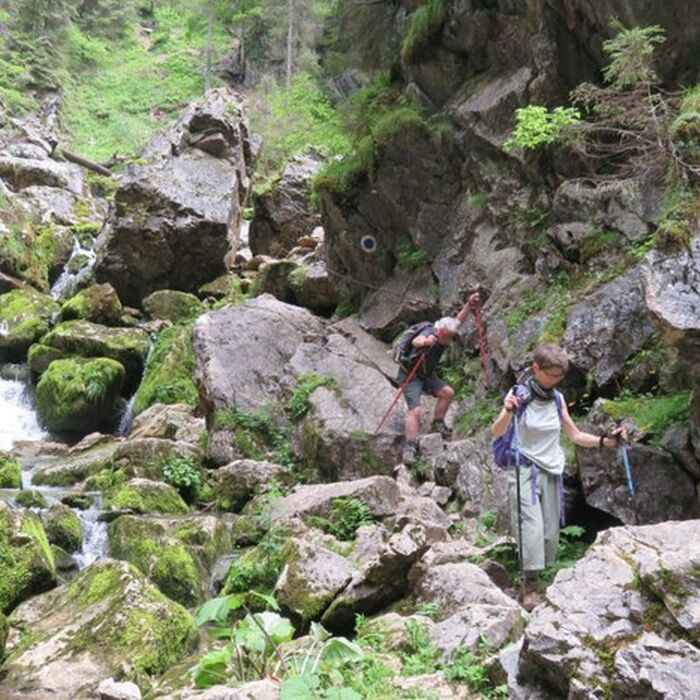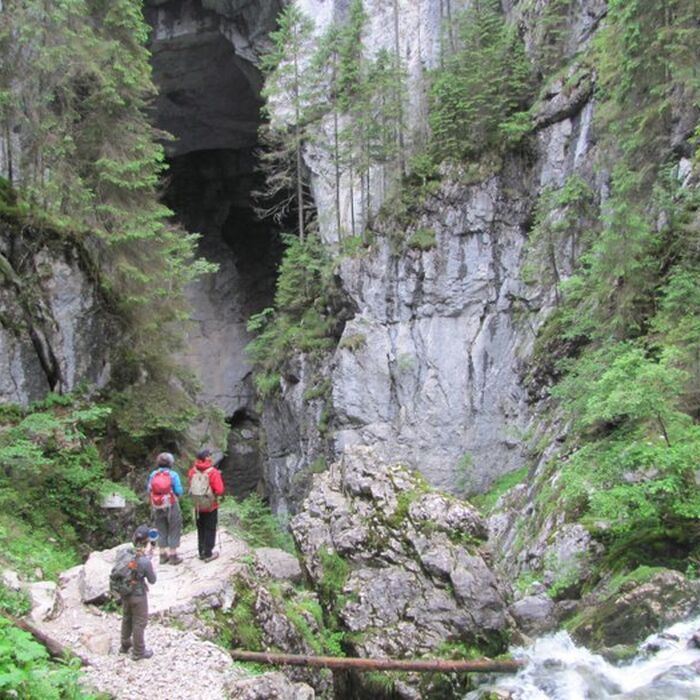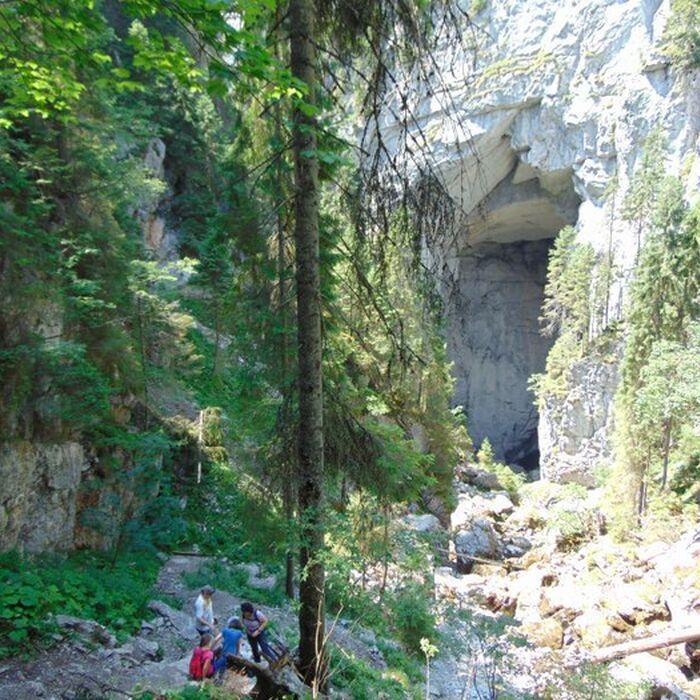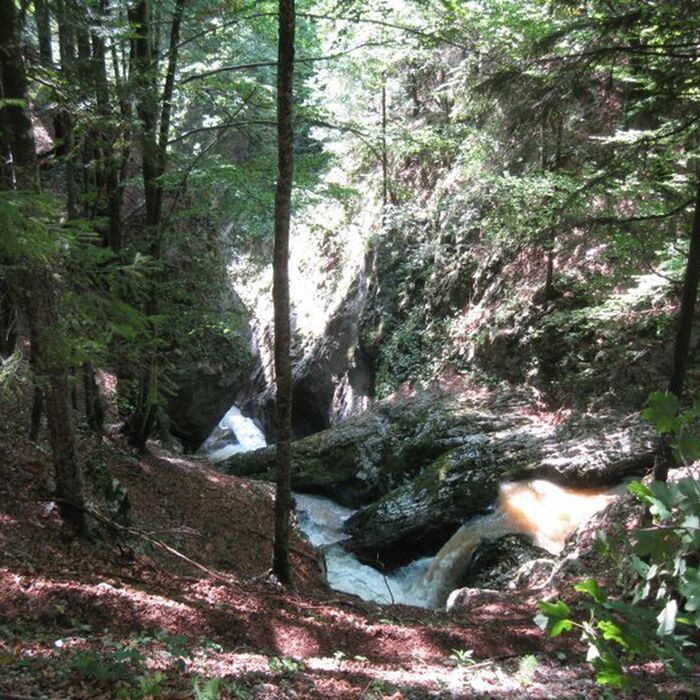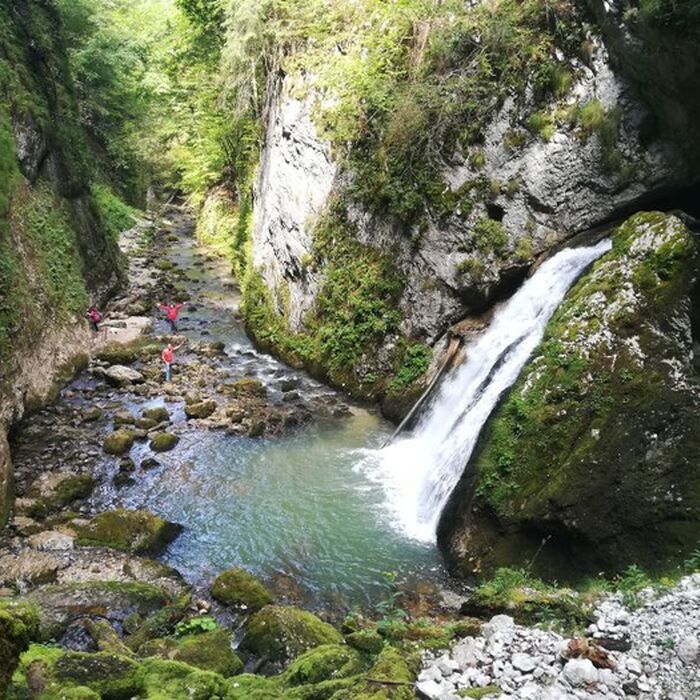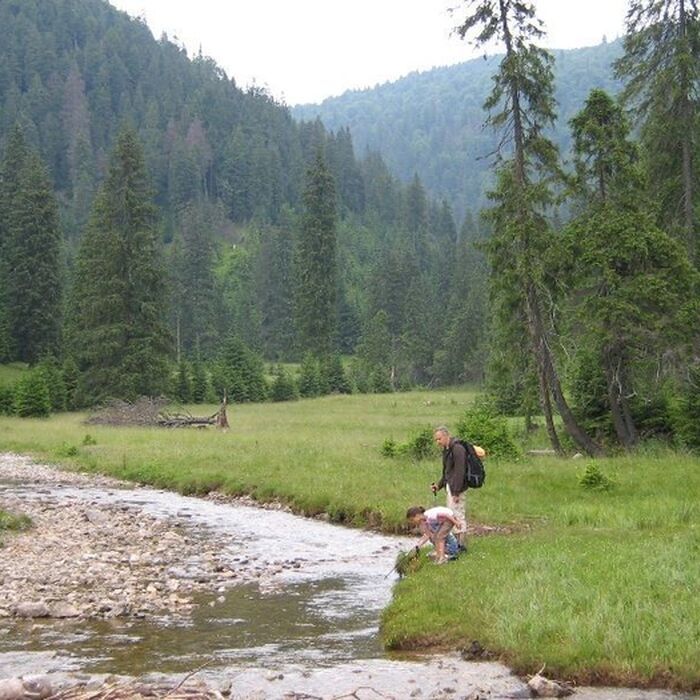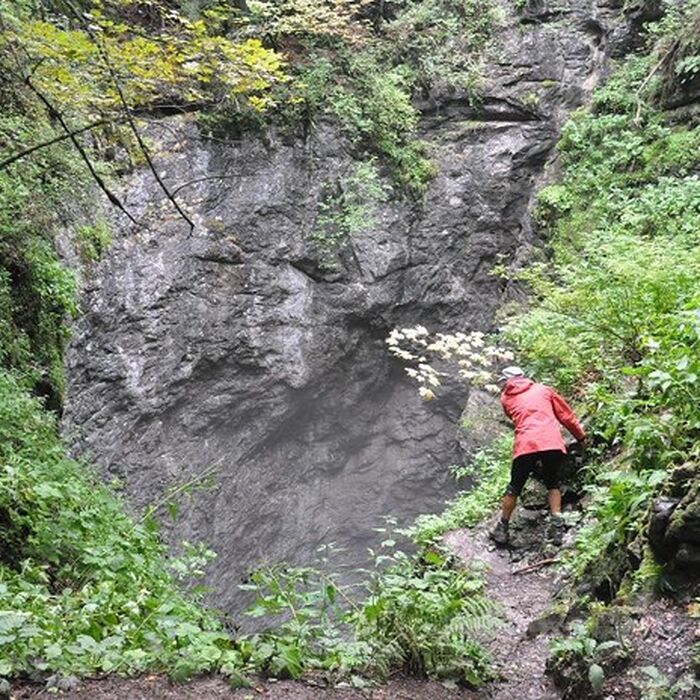Explore the ”Mountains at the Sunset” - Apuseni Mountains - 8 days




Explore the ”Mountains at the Sunset” - Apuseni Mountains - 8 days
In Western Romania lies a splendid mountain plateau that is little known: the Apuseni Mountains (the ”mountains at the sunset”), also known as Western Carpathians.
The Apuseni Mountains are a world unto itself. Comprising a large variety of geographical forms, not very high (the highest peak is Bihorul Peak – 1849 m) but with breathtaking karstic landscapes and traditional livelihoods, hosting a rich fauna and flora, Apuseni Mountains are unique in Romania and, in many respects, in Europe.
This world of deep forests and large silky meadows, impressive gorges and canyons, legendary waterfalls and fascinating caves is generous home for an abundant variety of animals and plants.
The underground world of caves is probably the most popular highlights and a source of proud for this area and its inhabitants; there are more than 7000 caves, many of them still unexplored completely.
Rates:
- 2 persons: 799 euro/person
- 4 persons: 670 euro/person
- 6 persons: 599 euro/person
The package includes:
- transfer Cluj Napoca airport – Albac
- transfer Padis - Cluj Napoca airport
- 4 luggage transfers between Albac and Runc, Runc and Ghetar, Ghetar and Casa de Piatra, Casa de Piatra - Padis
- accommodation 7 nights in en suite double room
- full board (dinner on first day, breakfast on last day, lunch is a pack one)
- 1 map and gps tracks, 24/7 emergency hotline
Not included:
- flight tickets, entrance fee at the Scarisoara Ice Cave, drinks, souvenirs, medical insurance
DESCRIPTION & FEATURES OF THE TREKKING TOUR
Day 1: Transfer from Cluj Napoca airport about 3 hours. Arrival at Aurora guesthouse from Albac village (Ariesului Valley). Accommodation and dinner.
Day 2: Albac village-Runc hamlet.
From Albac village, located in the Valley of Aries River, you will start hiking towards Runc mountain hamlet, one of the typical human settlements in these mountains. Duration: 4,5 hours. Level of difficulty: intermediate. Accommodation and dinner with the locals.
Day 3: Runc-Ghetar karst plateau.
From Runc, you will start walking for about 5 hours towards (easy to intermediate) Ghetar karts plateau, home of the famous Scarisoara Ice Cave (a cave which shelter the largest underground ice block in Europe-100.000 cubic meters of ice). Ghetar karst pleateu is inhabited by the local population of Motzi, people who lives in the Western carpathians at some of the highest altitudes in Romania (1200-1300 m). Accommodation and dinner at a local guesthouse.
Day 4: Ghetar-Calineasa-Casa de Piatra.
From your accommodation, you will first visit Scarisoara Ice Cave and then you will hike for about 5,5 hours (moderate hike) to Calineasa glade (a place used by local people as a summer settlement to raise and take care of their cattle, with no permanent houses, only some wooden cottages. In case of good weather, the glade (located at 1450 m altitude) offers a great view upon the highest peak in the Western Carpathians (1949 m) and Padis karst plateau. Casa de Piatra, your final point for the day, is a picturesque little hamlet where only 16 families live and where you will experiment the peacefulness and tranquility of this rural village. Accommodation and dinner at a local guesthouse (great and plenty of traditional food).
Day 5: Casa de piatra-Padis. Optional hiking to Ponor Glade.
From Casa de Piatra you will start hiking towards Padis karst plateau, the core area of the Western Carpathians and Apuseni Nature Park (2,5 hours, moderate hike). Once arrived at Cetatile Ponorului mountain cabin, you may relax on the cabin’s terrace over a beer or you could continue to discover the Ponor Glade (a unique glade in which you will see how a karst system works). This option means 2-3 hours of easy pace hiking. Accommodation and dinner: Cetatile Ponorului mountain cabin.
Day 6: The Ponorului Fortress hiking tour.
Considered by many one of the most impressive karst phenomena in Central Europe, Ponorului Fortress (Cetatile Ponorului) will be your highlight of the day. 4 hours moderate hike (visit of the 3 dolinas, the cave entrance and the upper trail which gives you a magnificent view over the abyss of the 3 dolinas).
Day 7: Discover by foot Focul Viu Ice cave, and Barsa Pit, another karst plateau, covered in deep spruce tree forest and full of caves and sinkholes. Enjoy a great view from Pietrele galbenei towards Bihor Peak (the highest peak in the Western Carpathians). A moderate hike of 5 hours, with 800 meters elevation gain.
Day 8: Departure. Transfer to the airport (Cluj Napoca) about 3 hours.
Information about the accommodation on this trip - subject of availability:
www.albac.ro - Aurora Guesthouse, Albac
https://www.facebook.com/LetitiaGligor23/- Pensiunea Gligor, Casa de Piatra
www.pensiuneascarisoara.ro - Scarisoara Guesthouse
www.padis.ro- Cetatile Ponorului Cabin
The guesthouse from Runc has no website or facebook page.
Details about trekking tour:
- optimal time: May - October
- transportation - car or minibus
- mountain tour requires a good physical shape, with resistance to medium effort but for long duration
See required equipment for adventure
See Classification of the trekking and hiking tours
About Apuseni Mountains
In Western Romania lies a splendid mountain plateau that is little known: the Apuseni Mountains (the” mountains at the sunset”), also known as Western Carpathians. The main access roads in the country swing around it, the towns are built at its margins. It’s a huge plateau cut in 2 by the scenic Aries River.
The Apuseni Mountains are a world unto itself. Comprising a large variety of geographical forms, not very high (the highest peak is Bihorul Peak – 1849 m) but with breathtaking karstic landscapes and traditional livelihoods, hosting a rich fauna and flora, Apuseni Mountains are unique in Romania and, in many respects, in Europe.
This world of deep forests and large silky meadows, impressive gorges and canyons, legendary waterfalls and fascinating caves is generous home for an abundant variety of animals and plants.
The unique flora of Apuseni Mountains makes the region extra attractive. Several micro climates and the complex geographic structure of the mountains created ideal conditions for a wide variety, numerous endemic and even a lot of extremely rare plants.
Big predators, such as brown bears and wolves are still roaming the Carpathian Mountains in Romania. In Apuseni Mountains one should not be surprised to hear the wolves howling late in the freezing winter night, under the full moon or meet the mother bear with her calves in spring, looking for fresh food. There are also lynx and wild cats as well as chamois and capercaillies, but they are extremely shy and therefore meeting them is simply a privilege. And then, not to mention the various bats colonies living in the numerous caves, most of them being nature reserves.
The Apuseni Mountains have a complex heterogeneous geologic structure. During millions of years the mountains were several times lifted up and submerged by the sea. Different climates, starting with tropical, then subtropical and later glacial climates followed each other. In this relative small area one will find a geologic mosaic of conglomerate, crystalline, volcanic rocks and limestone.
People & Local Culture
In Apuseni Mountains nature and people have been living in a perfect symbiosis since ever. Here, you will meet people whose unique way of life is still a long row of traditions and customs and whose stories are as old as the mountains.
Regarded as the most representative mountain population of Romania, the Moţi people give character to the area, through their way of life, specific architecture and local customs. Meeting the Moţi means not only a voyage back in time but also a return to the roots, to ancestral traditions, in an unspoiled environment, harsh and welcoming at the same time.
Harvesting the forest is still mostly pure man and horse-power. Logs are moved down the slopes by horses, and then transported by horse pulled carts to the summer villages where they are cut to timber. Most of these remote places have no electric power and all mechanized tools are somewhere powered by tractors or other engines. They come up around mid of May and stay for 3-4 months, till end September, the time the grass is gone. The men cut and transport the trees and then cut them to timber. The women take care of the household and the farm animals and often help loading, unloading timber.
The nature protected areas and its wilderness
Karstic landscapes with springs, sinkholes and lakes, large carnivores still roaming free over beech and resinous forests, alpine pastures on the high ridges, iconic birds such as golden eagle or capercaillie, high number of endemic botanical species, geological phenomena – all are sheltered in nature protected areas like Apuseni Nature Park, Scariţa-Belioara Nature Reserve or Crişul Repede Valley as well as in several other gelogical, botanical, spaeleological, forestry reserves and protected areas.
The underground world of caves
Probably the most popular highlights and a source of proud for this area and its inhabitants, there are more than 7000 caves, many of them still unexplored completely.
Limestone jewelleries and aragonite beauties, cave bears (Ursus spaeleus) skeletons and footprints of Neanderthal humans, underground glaciers and colonies of bats – this is the priceless dowry of Apuseni Mountains underground world.
In Apuseni Mountians the trails will take you through deep fir-tree forests and sunny glades, you will cross quick streams and creeks and you will admire gorges and visit unique ice caves. You will meet human settlements situated at the highest altitudes in Romania where mountain people named Moţi are still living according to old traditions and you will get a sense of their culture by listening to their tales, tasting their food and witnessing them in some of their traditional occupations such as wood carving and shepherding.

